Our team

Dr Jenny Giles
- Jenny is an ichthyologist and molecular geneticist, with a background as a specialist in shark fin identification for law enforcement using DNA and morphology. Jenny previously ran a US-based forensic consultancy, and worked at Stanford University’s Hopkins Marine Station, National Oceanic and Atmospheric Administration National Marine Fisheries Service’s forensic unit, University of California Davis’ Veterinary Forensic Laboratory and as a Fulbright Scholar at the US Fish and Wildlife Service National Forensics Laboratory (USA). Earlier, she held roles relating to shark and ray fisheries with CSIRO, the Australian Centre for International Agricultural Research/Indonesian Department of Fisheries and Marine Affairs, and Queensland Department of Primary Industry and Fisheries. She earned her PhD from the University of Queensland, and bachelor degrees in marine environmental science and Indonesian studies from the University of New South Wales. Jenny is passionate about the accurate identification of marine species in tricky settings. She has served in a range of international advisory roles for standards development in wildlife forensics and shark fisheries and trade compliance and enforcement, and has conducted fieldwork, forensic casework and investigations, and training in 15 countries.

Dr Andreas Zwick
- Andreas Zwick obtained his Ph.D. from the Australian National University in 2006, studying the phylogeny and taxonomy of the Australian moth family Anthelidae. He then worked at the University of Maryland Biotechnology Institute (USA) on the higher classification of moths, and as a research scientist and curator of the moth and butterfly collection at the State Museum of Natural History in Stuttgart (Germany). He returned to Australia in 2014, to take up a position as research team leader of the Phylogenomics Team at the Australian National Insect Collection. With his team, he developed miniaturised high-throughput genome skimming, which underpins the lab work of the NBDL. He now oversees the data generation and analyses at the NBDL, and is the Acting Director of the Australian National Insect Collection.
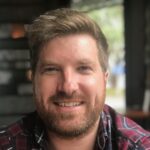
Dr Todd McLay
- Todd’s research focuses on developing and applying reference sequences for DNA-based species identification, including eDNA. He works with the bioinformatics team on NBDL sequence data and collaborates closely with Australia’s biological collections to ensure the accuracy and integrity of the sequence data. Todd has a background in genomics, phylogenomics, population genomics, and taxonomy of plants. He earned his undergraduate and masters degrees from Massey University, New Zealand, and his PhD from the University of Melbourne. Todd has current research affiliations with University of Melbourne and the Royal Botanic Gardens of Victoria, and leads the NBDL’s work on plants and macroalgae.
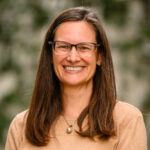
Dr Nerida Wilson
- Nerida is a marine molecular biologist, who received her B.Sc. from University of Melbourne, and B.Sc. (Hons.) and PhD from University of Queensland (2004). After two postdocs in the USA (Auburn University, Scripps Institution of Oceanography) she returned to work at the Australian Museum, the Western Australian Museum and now CSIRO. Nerida has published 130 peer-reviewed publications and has four species named after her. She has participated on 17 oceanographic expeditions and acted as Chief Scientist on several of those. She currently coordinates campaigns for the National Biodiversity DNA Library where she enjoys working across a broad range of organisms, although she retains a soft spot for sea slugs and seadragons. Who doesn’t.
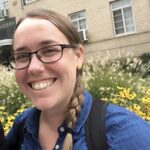
Dr Anna Kearns
- As well as her role with the NBDL, Anna is team lead for CSIRO’s Australian National Wildlife Collection, lead of Bioplatforms Australia’s Avian Genomics Initiative and she chairs the Australasian Regional Advisory Group to the global avian taxonomic checklist initiative, AviList. She previously worked at the Smithsonian Institute (USA), the University of Maryland Baltimore County (USA), and the Natural History Museum in Oslo (Norway), and completed her PhD at The University of Queensland. Anna is an evolutionary biologist with a special interest in using museum collections to better understand the systematics, biogeography, and conservation genomics of birds in the Australo-Pacific region.

Dr Mandy Reid
- Mandy is an experienced taxonomist who has devoted her career to working with both State and International Museum collections. Her research primarily centres on cephalopods—including squids, cuttlefishes, and octopuses—as well as velvet worms (Onychophora). Over more than a decade, Mandy managed the mollusc collection at the Australian Museum, overseeing an impressive assembly of 11 million specimens. Her extensive experience underscores her commitment to the careful stewardship and responsible use of museum collections. Her main duties involve visiting museum collections, collaborating closely with collections and research staff, and undertaking tissue sampling and specimen photography. The samples she collects are sequenced and used to build the NBDL library, advancing scientific research and documentation efforts. Mandy holds a deep appreciation for the significance of museum collections and is a passionate advocate for their thoughtful and considerate use. She strongly believes that museum collections are vital for preserving scientific knowledge for both present and future generations. In the context of the NBDL initiative, Mandy takes pride in generating new data and metadata from collection specimens, recognising that this additional information further enriches the collections and ensures they remain valuable resources for the scientific community.
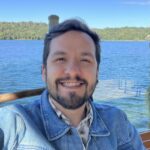
Leonardo Goncalves Tedeschi
- Leo holds a Bachelor’s degree in Biology and a postgraduate degree in Conservation from Pontifícia Universidade Católica do Paraná, Brazil, as well as a Master’s degree in Animal Biology from Universidade de Brasília, where he studied the phylogeography of Psomophis snakes. Leo has worked across Brazil and Australia, contributing to species discovery, conservation efforts, and genomics. His research has focused on the taxonomy and description of cryptic species, including the description of 11 new species of Australian geckos, with ongoing work with skinks and dragons. Leo enjoys combining fieldwork, laboratory work, and data analysis to support research projects, ranging from reptiles and insects to fish and birds. His background includes curating museum collections, conducting molecular lab work, species taxonomy, and conservation. He has worked closely with Australian museums, universities, and Indigenous communities. As part of the NBDL, Leo supports biodiversity genomics efforts through specimen management, DNA sequencing, and bioinformatics.
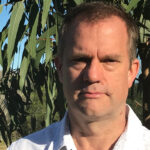
Dr Stephen Bent
- Stephen Bent is a Bioinformatician who has lived in the UK, the US, and around Australia. His focus is on DNA sequence data analysis, with particular expertise in genomics, microbial ecology, gene expression, and phylogenetic analysis. He is responsible for much of the NBDL’s back-end sequence data and metadata.
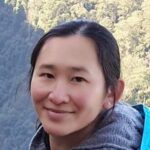
Claire Yang
- Claire grew up in the South China city of Nanning and received a B.Sc. in Biotechnology from Guangxi University. She moved to Canberra in 2006, where she completed a master’s degree in biotechnology at the ANU. Since then, Claire has worked in microarray and Illumina sequencing at Diversity Arrays. From 2018, Claire worked in Gaetan Burgio’s lab in JCSMR, ANU, producing CRISPR mouse lines which were used to model human diseases. Claire works processing NBDL samples in the Phylogenomics Team at the Australian National Insect Collection to generate genetic data, using a high throughput robotics platform.
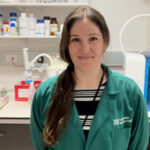
Liz Broady
- Liz discovered her passion for genetics during her undergraduate degree in science from the University of New South Wales. That passion led her to the Australian National University where she helped to generate the phylogenetics data for the Australian Amphibian and Reptile Genome and Oz Mammals Genomes Projects (AusARG and OMG respectively). She now works in the Phylogenomics Team at the Australian National Insect Collection where she supports the NBDL lab operations.
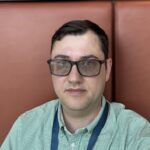
Julian Hausner
- Julian grew up in Germany and completed his Bachelor of Science in Chemistry at the Julius Maximilian University of Würzburg. During his studies, he became fascinated by the way chemistry, biology, and computing intersect to reveal how living systems function at the molecular level. This curiosity brought him to Australia, where he completed a Master of Applied Science (Research) at the University of Canberra, focusing on robotics and laboratory automation. Since then, Julian has specialised in developing high-throughput genomic workflows and integrating advanced robotic systems. He is excited to bring his passion for biodiversity and genomics to the NBDL.
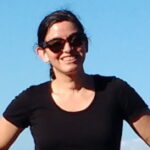
Dr Liz Milla
- Liz Milla is a CSIRO Research Scientist who works on the development and application of novel environmental DNA (eDNA) technologies to study pollination ecology and support environmental monitoring. Liz is supporting the NBDL as a representative of the eDNA end user community, writing the user-facing technical documentation for the portal and assisting with various aspects of ensuring the NBDL is fit-for-purpose. Liz’s research interests including integrating ecological and genomic approaches to uncover interactions between plants and their insect pollinators, with the goal of identifying keystone species and informing conservation strategies, and supporting the accessibility and accuracy of species and genomic data.
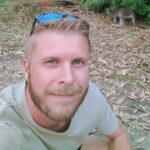
Troy Denyer
- Troy is a senior Business Analyst with Data Management Applications (DMA) in CSIRO’s Information Management and Technology (CSIRO-IMT) working exclusively with the NBDL. Troy earned a Bachelor of Commerce from Deakin University including a specialisation on electronic commerce management, and has worked on a range of projects providing services for the management and distribution of data among partners. Since joining CSIRO to work with the NBDL, Troy has enjoyed working with the team to create something of national benefit to science and the environment. Troy acts as a conduit between the NBDL team and the developer and tester team working on the NBDL in CSIRO-IMT.
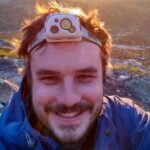
Dr Jesse Wallace
- Jesse did his PhD on the ecology, genomics, and behaviour of the Bogong Moth at ANU and Lund University where he developed a novel, automated, camera-based method for monitoring the behaviour and abundance of Bogong Moths in the Australian Alps. He also produced a reference genome for the Bogong Moth, and performed large-scale population genomic, epigenomic and transcriptomic experiments aiming to understand the basis of the Bogong Moth’s incredible long-distance navigation. He is now the NBDL bioinformatics specialist, where he is responsible for cleaning and analysing the DNA sequence data.
